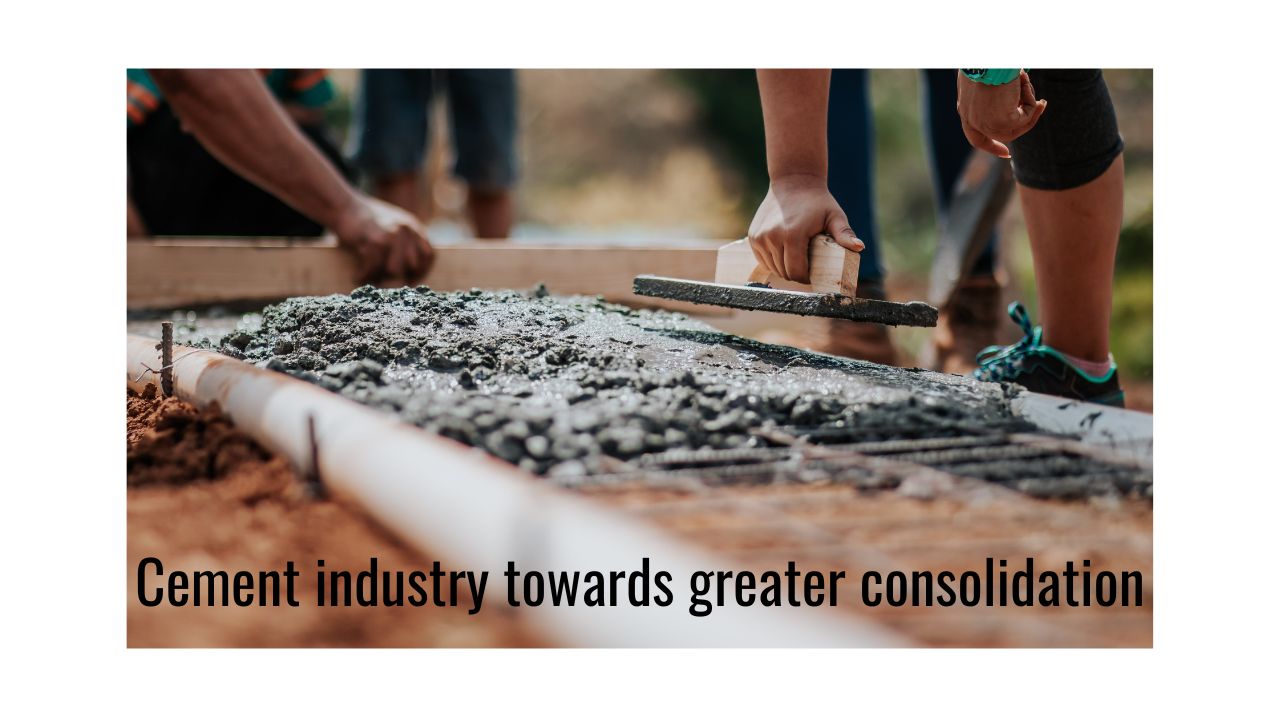Consolidation is the Mantra in Indian cement industry

Last Updated: 16th December 2022 - 01:26 am
In the last couple of months, there were two major news items on the cement sector. Firstly, it was the Adani group which swooped and took over Gujarat Ambuja and ACC and acquired close to 70 million tonnes per annum (MTPA) of cement capacity at the stroke of a pen. This was allowed by the largest cement company in India, Ultratech Ltd, announcing a Rs12,886 crore capacity expansion plan. Indian cement, once the haven for small and mini cement plants, is rapidly consolidating into a “winners take it all” kind of scenario. In the last couple of years, several major changes have happened in the cement industry. The Nirma group forayed into the listed cement space via Nuvoco Vistas.
JSW group has laid out aggressive plans to get into the cement business. Players like Dalmia Bharat are chalking out aggressive expansion plans to enable their capacity to nearly double in the next few years. The latest and the biggest was the Adani group shelling out $10.5 billion to take over Ambuja Cement and ACC by buying the stake of Holcim and then making an open offer.
The mora of the consolidation story in cement has been that when an aggressive new player enters the market, it exerts pressure on small cement manufacturers and also puts pressure on the larger players to explore ways and means of protecting their market share. The result of this entire exercise could be price wars with the concomitant impact on margins but that is something we will only get to know in the next few years. Ironically, cement makers who aspire for stable pricing and healthy margins may get outpriced in this kind of a market.
This will have two broad implications for the cement industry as a whole. On the one hand, the consolidation in the cement industry will sharpen further and that means the smaller cement manufacturers and the mini-cement plants will be at a disadvantage. Secondly, as the top five (Ultratech, Adani, Shree Cement, Dalmia) add capacity, the fight for volumes will leave a steep impact on pricing power and margin. Ultratech still leads the race with 120 MTPA cement capacity, but others are catching on and even expanding rapidly.
Start Investing in 5 mins*
Get Benefits worth 2100* | Rs.20 Flat Per Order | 0% Brokerage
You only need to check out the ambitions of some of the large players. With 70 MTPA cement capacity in hand, the Adani Group is gearing up to double its capacity to 140 MTPA over next 5 years. JSW Cement will boost its cement capacity to 25 MTPA while Dalmia Bharat plans to scale from the current 36 MTPA to 49 MTPA by 2024 and to 130 MTPA by year 2030. The third largest cement manufacturer, Shree Cements, has also laid out grand plans to expand its cement manufacturing capacity from 50 MTPA to 80 MPTA by 2030.
However, all this may not be great news for the very companies expanding capacity. For example, the capacity boost is likely to create a glut of cement since demand for cement is not expected to outpace supply. The impact will be more on the smaller cement players since nearly 80% of the capacity additions will happen in the top 5 cement manufacturers only. This will put most of the marginal players at a serious disadvantage vis-à-vis their larger counterparts. Also, larger players will leverage their brand value and deep pockets.
Impact on prices and profits
The real impact of the rise in cement capacities across India would be felt on the pricing power and the profit numbers. The capacity addition is likely to outpace the growth in demand by FY24 and that is when most of the pressure will be visible. Another area that investors and analysts are worried about is the impact of capacity utilization on the ROE. For instance, between 2008 and 2017, capacity utilization fell from 100% to 64%. At the same time, the return on equity (ROE) also tapered from the range of 20-25% to just about 8%. The other big challenge is the pricing.
Typically, the valuations of the cement industry is based on whether the manufacturer has the pricing power or not. That will determine whether prices can be hiked or not. For instance, it would be a real challenge if competitive pressures prevented cement manufacturers from hiking prices to compensate for a spike in the manufacturing costs. After all, the input costs are likely to remain elevated in the near term and that will continue to put pressure on the operating margins of cement companies.
Trending on 5paisa
05
 5paisa Research Team
5paisa Research Team
Discover more of what matters to you.
Disclaimer: Investment in securities market are subject to market risks, read all the related documents carefully before investing. For detailed disclaimer please Click here.

